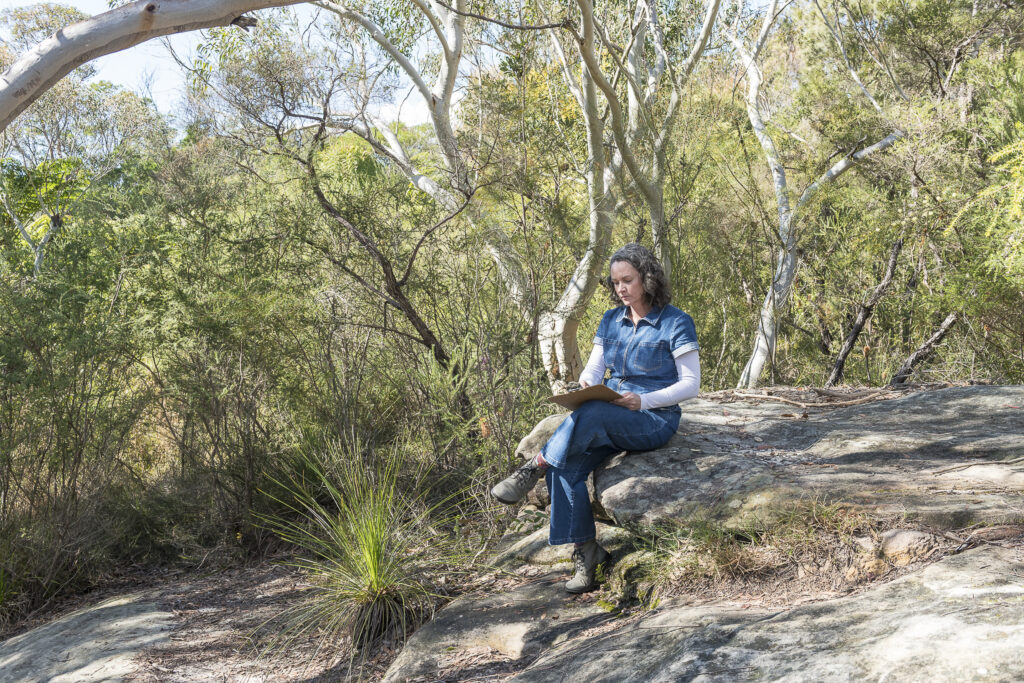Louise Frith
Words: Michael Sharp
Photography: Ashley Mackevicius
Little Blue Gum Creek ran through the back yard of Louise Frith’s childhood home as it meandered its way into Lane Cove National Park. Her best friend lived on the other side of the stream and the two young girls would spend hours exploring, returning home around dusk.
“The bush was my playground and I was given a lot of freedom by my parents,” Frith recalls fondly. “I was always observing what was there and what was happening, trying to understand the relationship between insects and skinks and possums and where they were hiding and what they were eating. The blueberry ash trees would change from these frilly little white flowers to blue berries and the currawongs would eat them and then they would fly overhead and drop purple splats everywhere.”

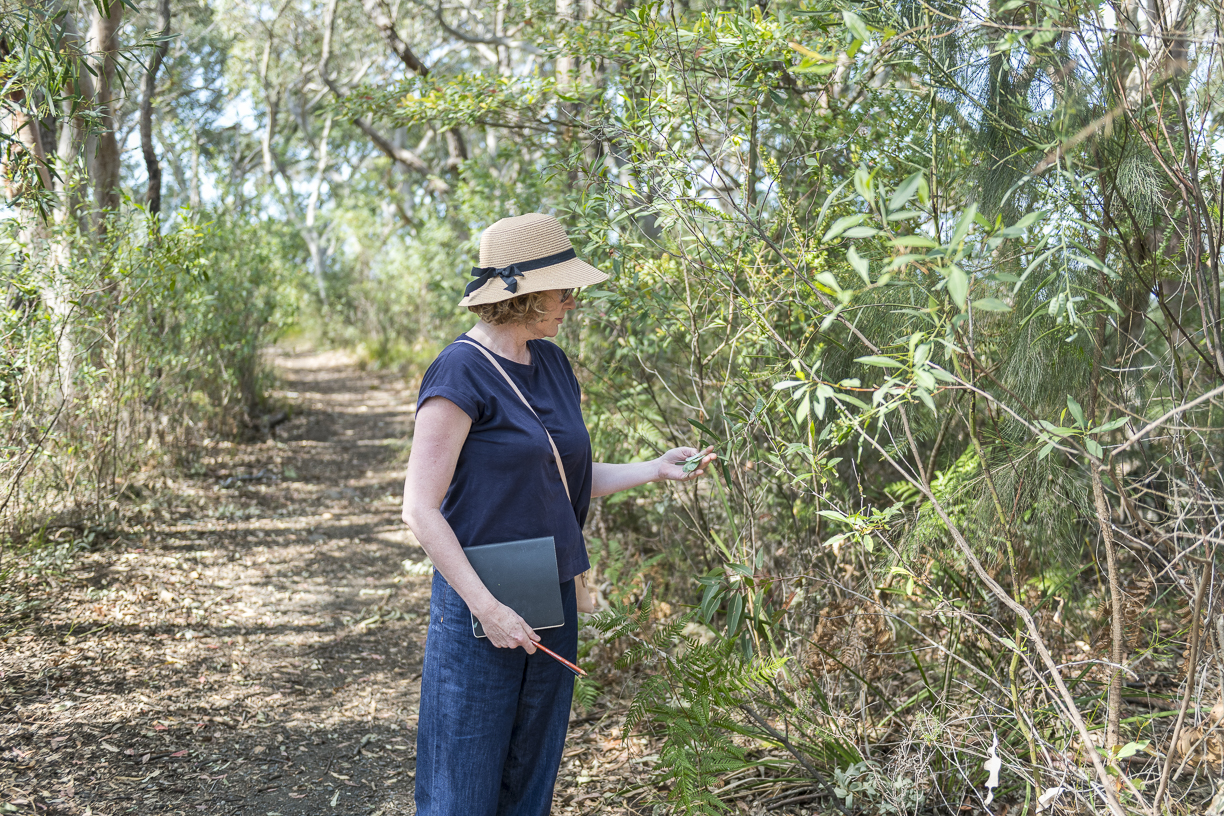
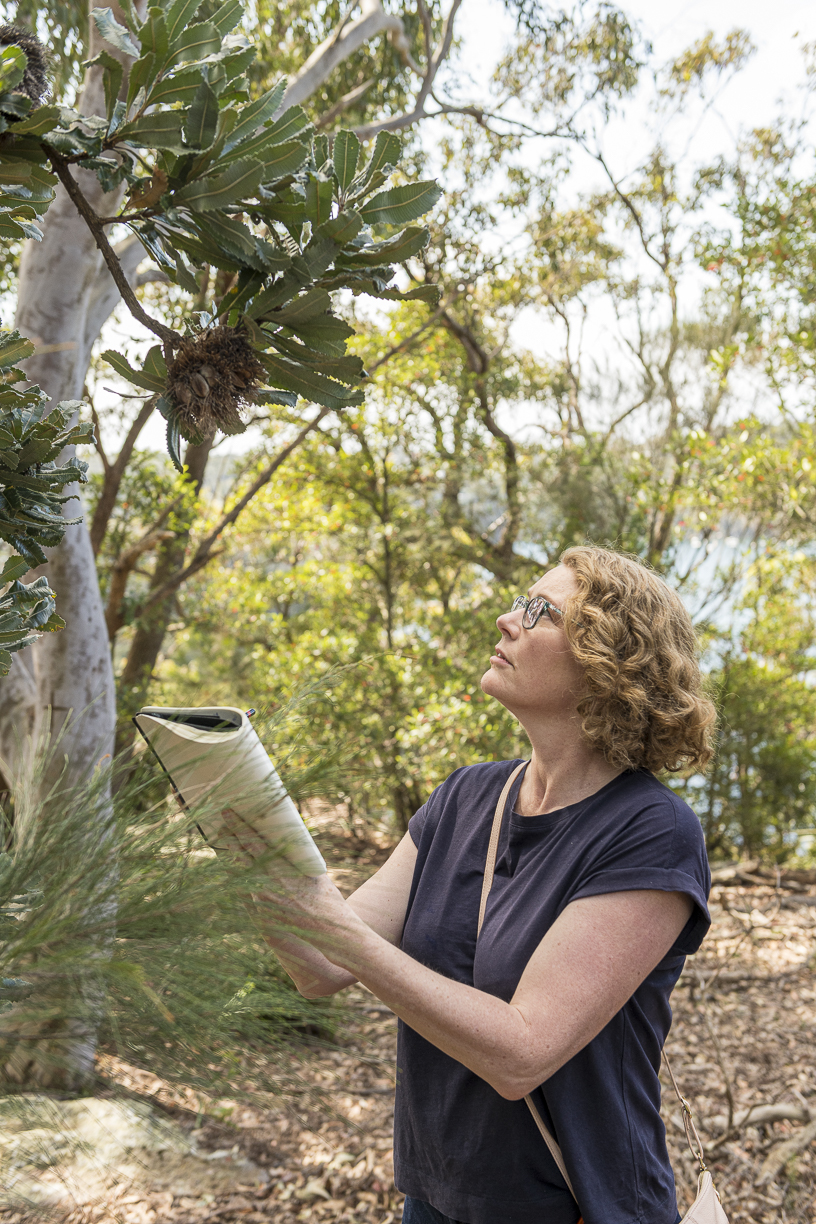
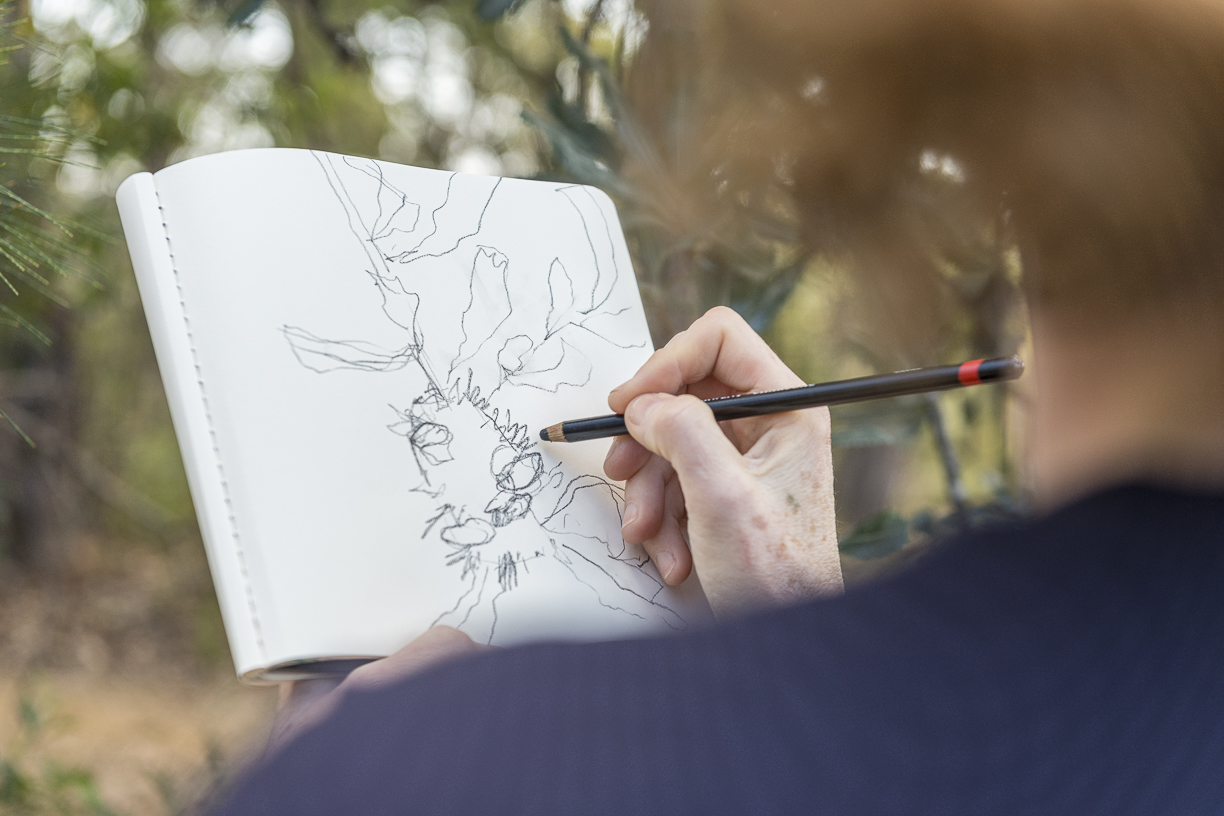
Frith’s discovery of art began about the same time as she was discovering the wonders of nature.
“When I was in Year 2, I sat next to a girl who could draw horses like no one else. One day she said ‘I’m going to be an artist’ and that was the first time I realised there was such a thing as an artist.” This knowledge, combined with compliments from her art teacher, caused young Louise starting to think seriously about art.
By the time she was in high school, Frith was creating portfolios of her work, accompanied with notes and observations, even though this wasn’t a requirement of the course at that time. She remembers the “visual excitement” of being introduced to Edvard Munch and the Symbolists in Year 10 and says she was fortunate to have a very good art teacher who arranged for her students to do life drawing classes after school.
Frith enrolled to study environmental science after high school, but when she learned that a friend was going to develop her drawing skills at TAFE, she decided to take a similar path. Frith was accepted into Meadowbank TAFE and studied there for two years, majoring in photography and sculpture and completing an Associate Diploma in Fine Arts.
She then travelled in Europe for three months and, when she returned, worked for a picture framing business in Crows Nest owned by the legendary Australian actress, Ruth Cracknell, and her husband, Eric.
In 1995, Frith and her partner Luke went to London. They stayed for 15 months and while there Frith attended a course in botanical drawing at Kew Gardens, drew the dahlias in Holland Park and would frequently take her sketch book to the British Museum and the Victoria and Albert Museum. When she returned home, she worked for the Cracknells again before joining the Goodmans auction house for several years.
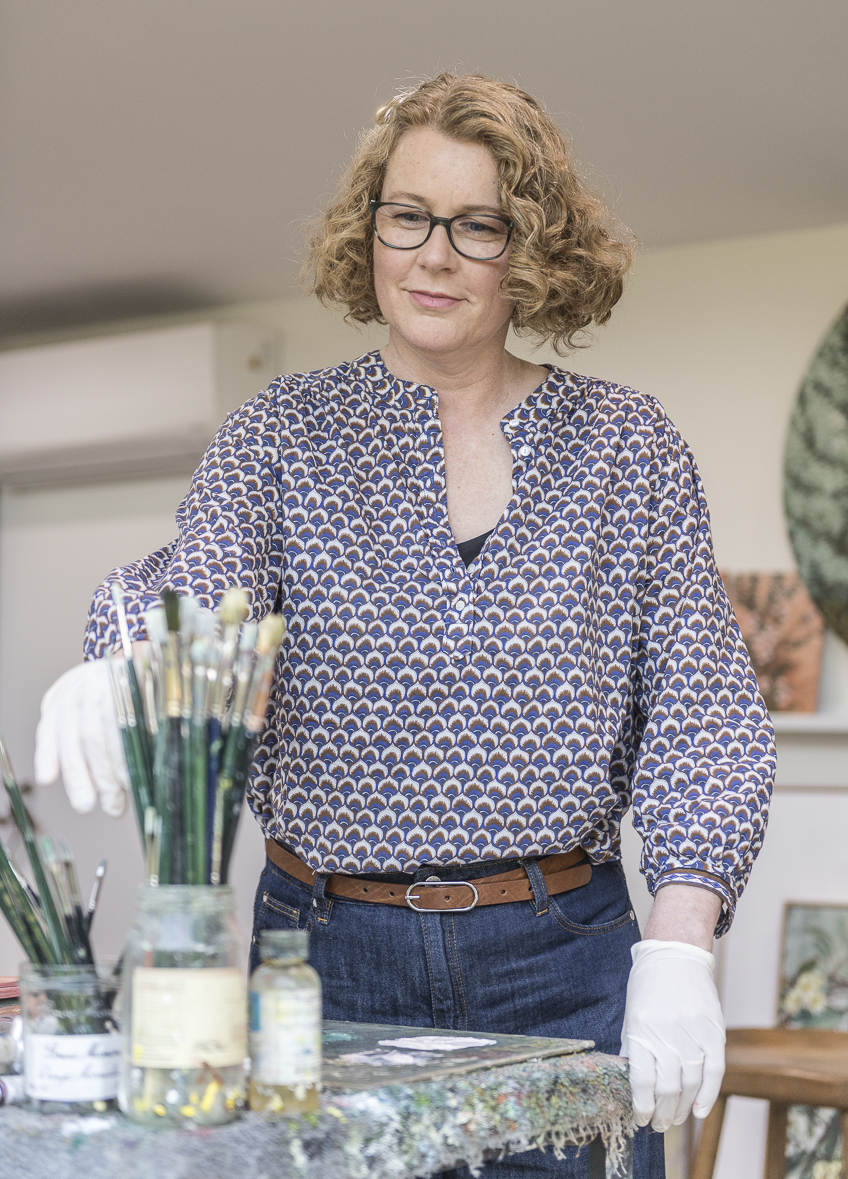
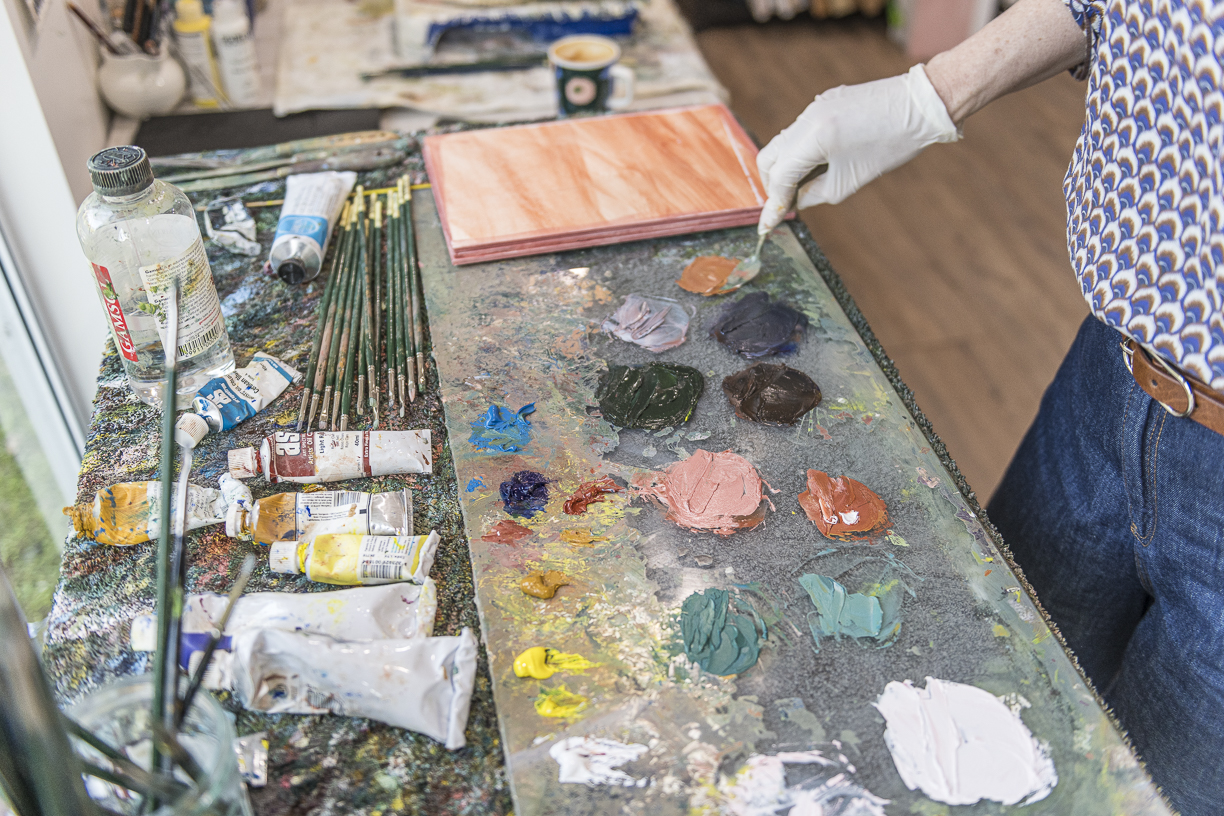
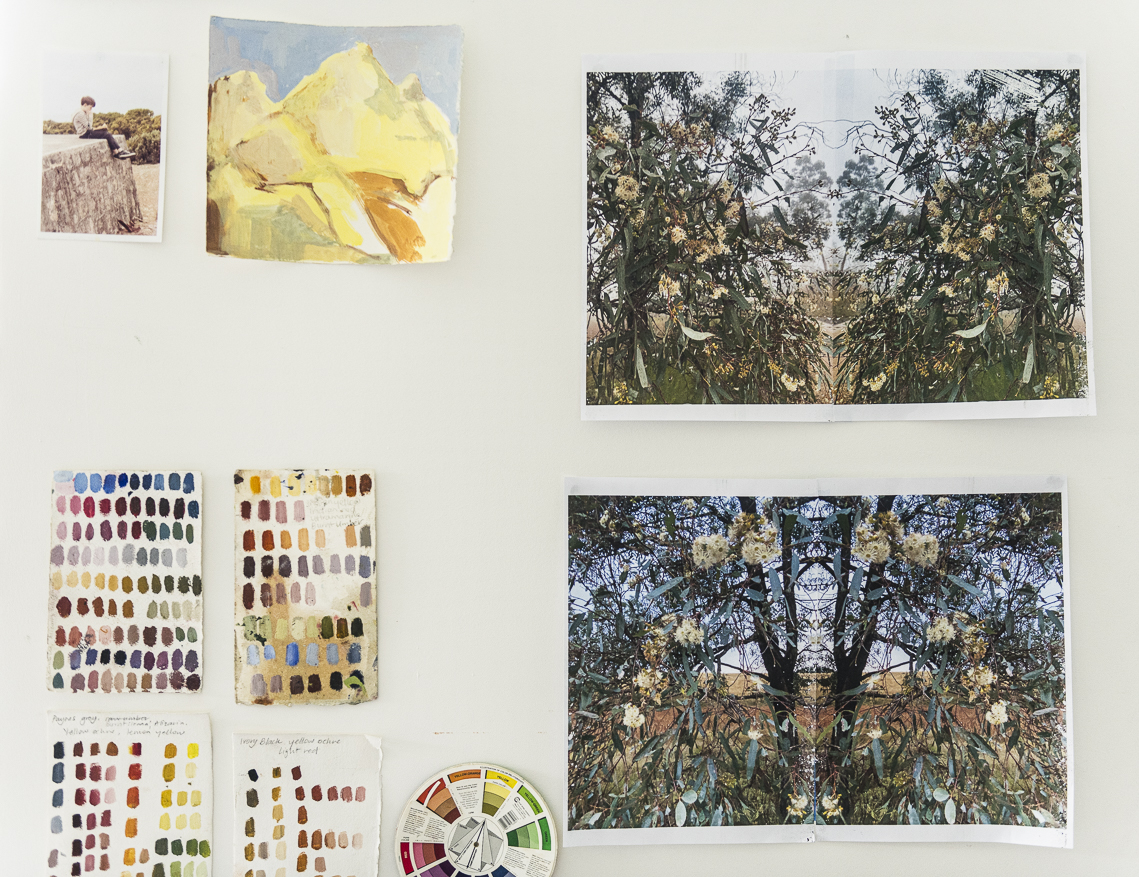
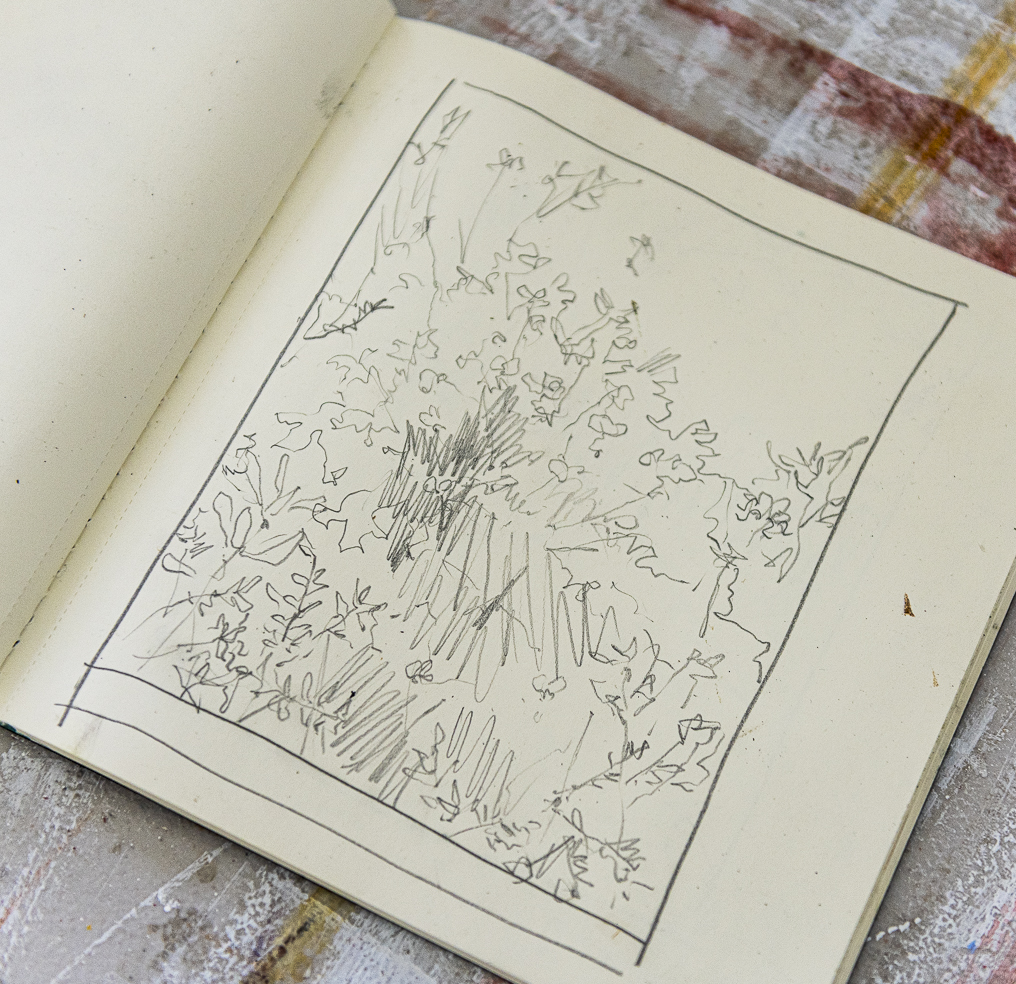
There wasn’t much time for her art while Louise and Luke raised young children, but she signed up for several summer schools at the National Art School, including with Suzanne Archer. When her youngest child went to pre-school, Frith enrolled in Jo Bertini’s courses at Willoughby Arts Centre and this proved crucial for her confidence.
“Jo said to me: “You can do this.” It was the right time for me and she was the right person at that time.”
Frith continued to develop her practice, attending workshops with Robert Malherbe, Lucy Culliton and Tim Allen, but she had not yet exhibited her paintings.
“It is so different now with social media and what you can do. Through my 20s, I didn’t feel like there was any chance I was going to show somewhere. I was casting around, but I didn’t really have a clear idea what I was making. Jo Bertini helped crystallise things but Luke was the one who said I needed a studio.”
Frith successfully applied for a space owned by the council above Northbridge library and “things really started to happen. I stopped thinking about what I should be doing and thought about that quote from Matisse: ‘You’ve got to do 500 paintings before you do a good one.’ So it was paint, paint, paint, paint, paint.”
She shared the Northbridge studio with two other artists, Jane Guthleben and Peter Finlay, and their group exhibition at Willoughby Arts Centre was Frith’s first public show. Frith then exhibited with her friend, Fiona Smith, at Ewart Gallery in 2018 and White Rhino in 2019.
Increasingly, friends urged her to post her work on Instagram. Frith followed this advice, and soon afterwards she was contacted by Amber Creswell Bell, who is Director, Emerging Art for the Michael Reid galleries. Creswell Bell invited Frith to join Melanie Waugh and Emily Gordon in a show in late 2019 and then The Country Interior group exhibition, a collaboration with Country Style magazine at Michael Reid Murrurundi in March 2020.
Over the past four years, Frith has exhibited regularly across Michael Reid’s Murrurundi, Northern Beaches and Southern Highlands galleries and she was thrilled to be part of Murrurundi’s presence at Sydney Contemporary in 2022.
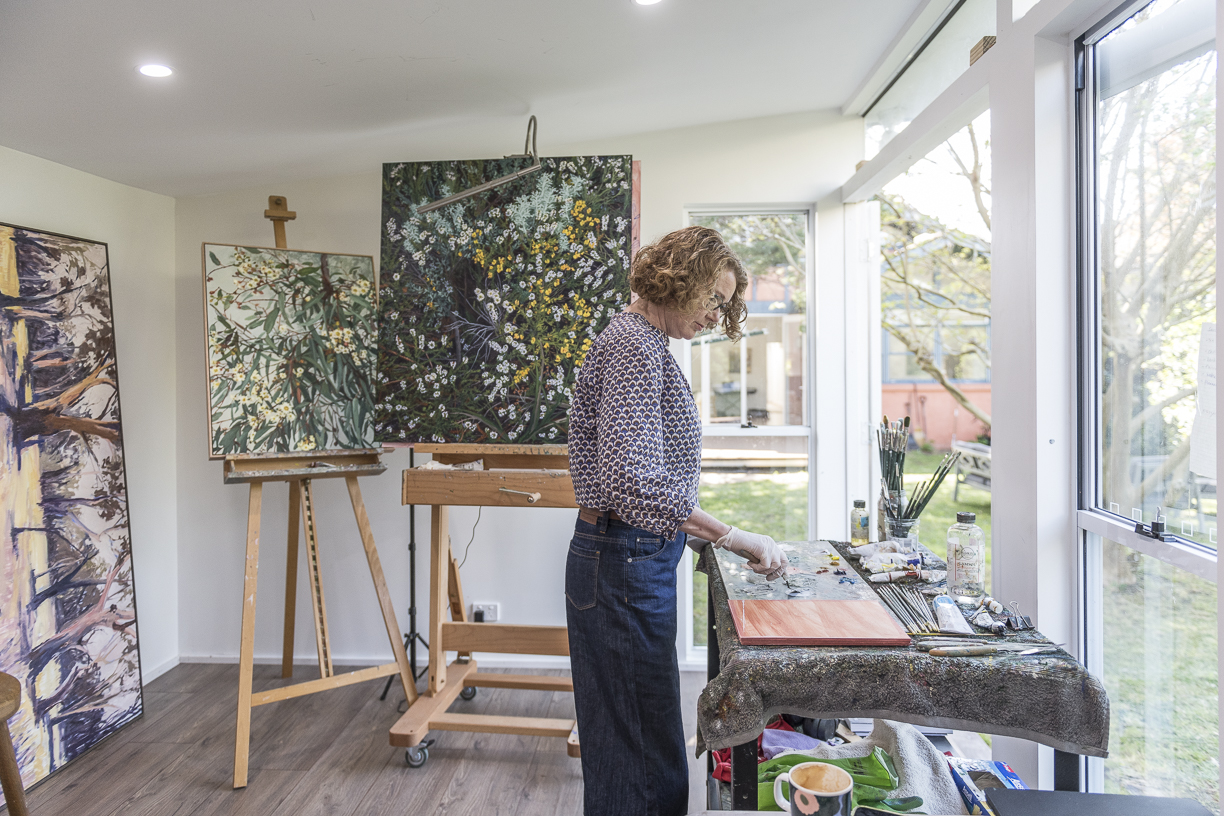
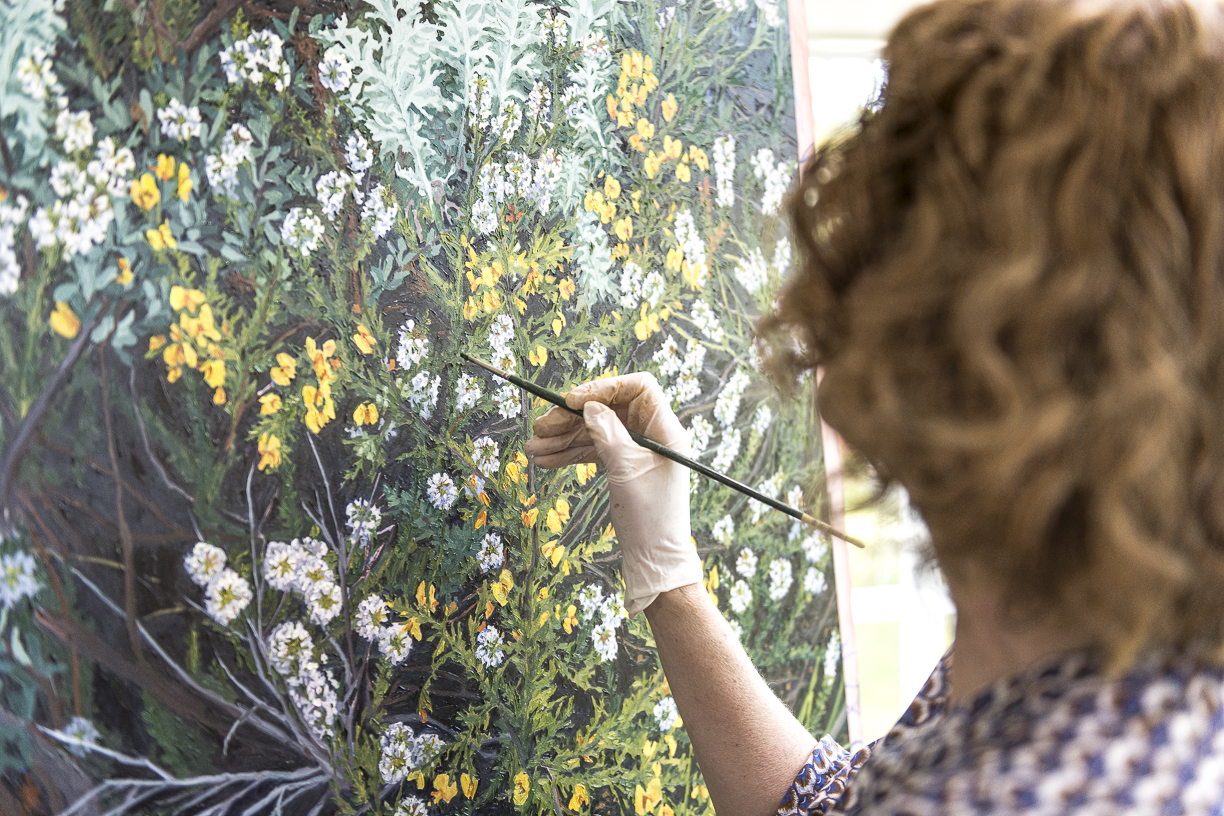
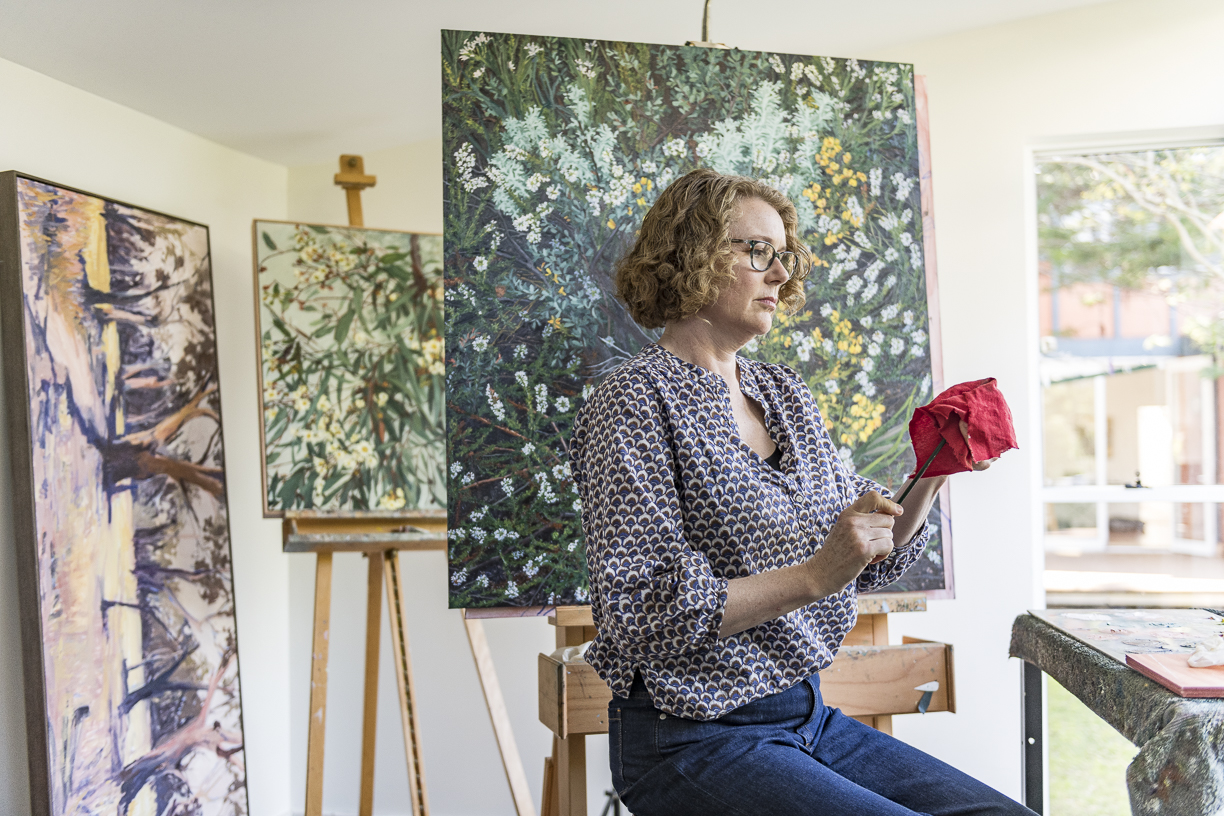
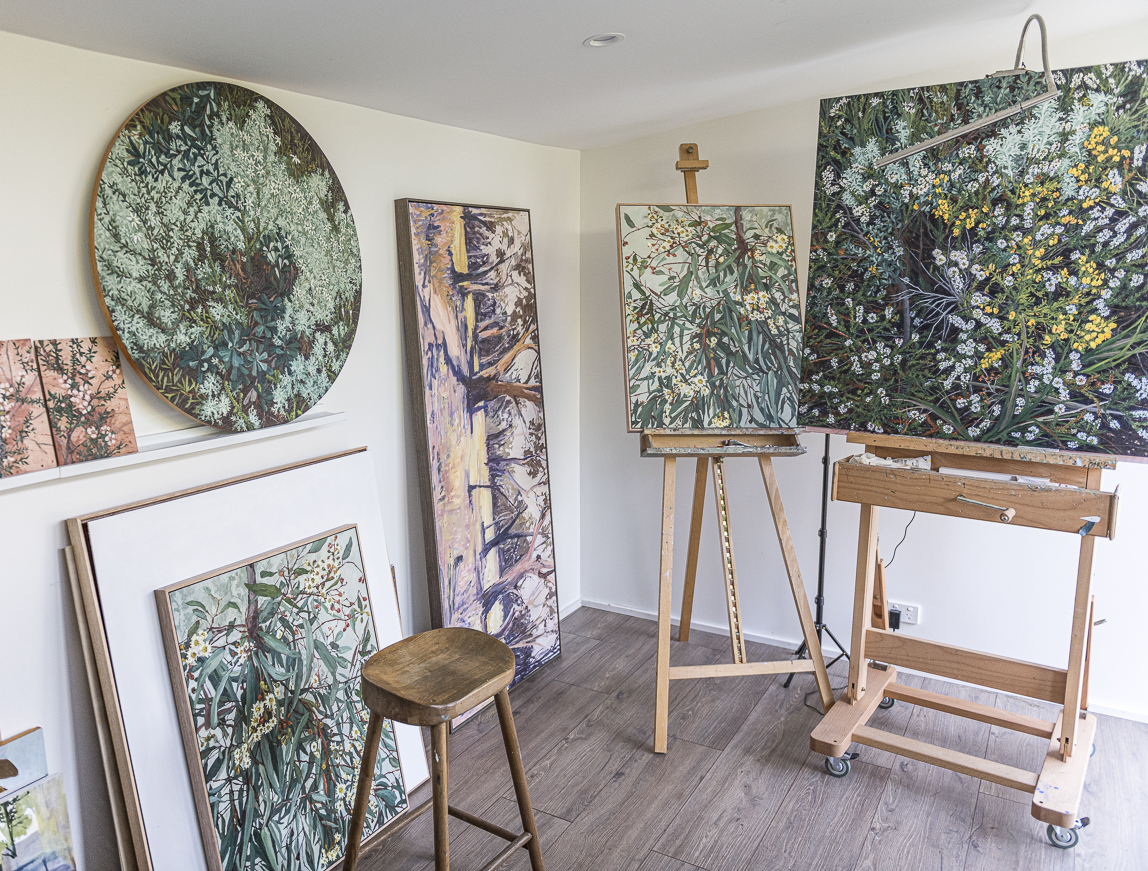
Frith’s latest exhibition continues to reveal her experience in the landscape, but she “wants to draw people’s focus into the detail. Most people walk into the landscape and they’ll look around and see the broader view but this is also about drawing them in. I’m inviting them to have a closer look.”
Most of the paintings are of scenes in North Head, which is a continual source of inspiration for Frith. “I go there about once a month to see how it’s transformed, because every time I go it’s different. In June, all the wattle is out and in November the flannel flowers are out and right now it’s just incredible.”
She has loved Australian native flowers since her childhood growing up by Little Blue Gum Creek and the flannel flowers that grew in Lane Cove National Park were a favourite of her mother and one of the first plants young Louise could identify.
The entrance to Frith’s home boasts a carefully curated garden which plays an important part in her daily routine.
“Before I start painting every morning, I potter around in there because it transports me to a different place in my head. It breaks the over-thinking part of me and puts me in a more relaxed state before I go into the studio and get to work.”
This work involves Frith’s time-consuming technique.
“When I’m painting a flannel flower, for example, I paint the flower and then I cut in with the paint all around that flower. I don’t paint a background layer and then paint the flannel flower on top. It’s just the way my painting has developed.”
She also employs the “limited palette” technique she learned from a master class with Elisabeth Cummings a decade ago.
“It is where you take a select number of colours and you only use those,” Frith explains. “For me, that helps to produce a more cohesive painting.”
Frith used to work in the corner of the family kitchen, but in 2022 she moved to a studio in the backyard. “That has been an absolute game-changer,” she says, “not having people interrupt me – and the space!”
She has progressively established herself since her first group show five years ago and is enjoying her artistic journey.
“I have always treated it as a ride” she says. “I don’t really know where it’s going, so I’ll just keep on pedalling and see where it takes me.”
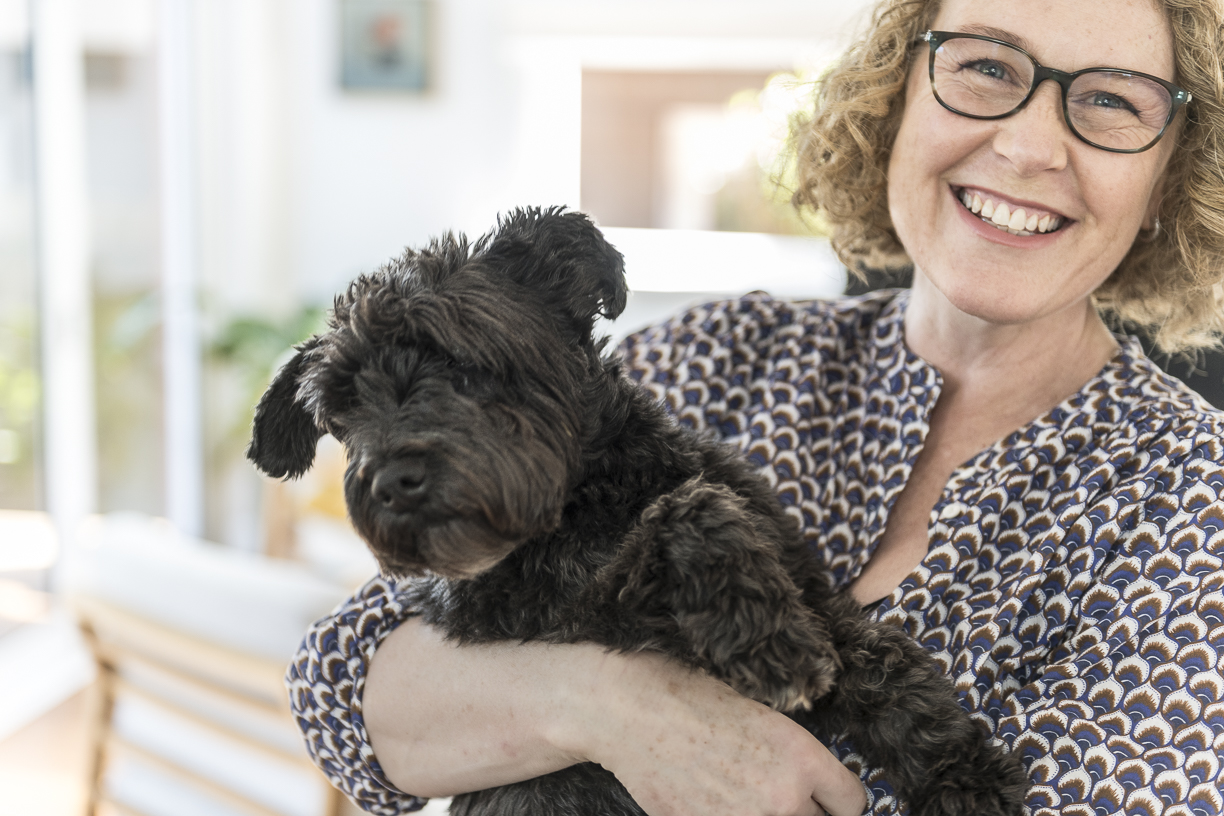
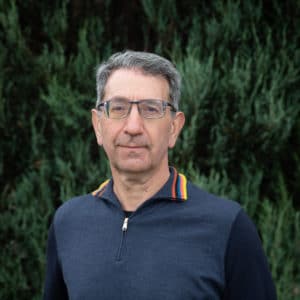
Michael Sharp
Michael has been working at Michael Reid Southern Highlands since it opened in March 2022. He has previously worked as a lawyer, journalist and senior practitioner in Australian corporate affairs.
- xxi Pecora Dairy June 2024
- XXIX David King December 2025
- XXVIII Nicola Woodcock August 2025
- xxvii Marlie Draught Horse Stud May 2025
- xxvi India Mark February 2025
- xxv Mussett Holdings December 2024
- xxiv Louise Frith October 2024
- xxiii Dirty Jane August 2024
- xxii Melanie Waugh July 2024
- xx Emily Gordon May 2024
- xix Steve Hogwood March 2024
- xviii Julz Beresford February 2024
- xvii Snake Creek Cattle Company November 2023
- xvi Ben Waters September 2023
- xv The Reid Brothers August 2023
- xiv Elizabeth Beaumont July 2023
- xiii The Charlotte Project June 2023
- xii Buddhism in Bundanoon May 2023
- xi Honey Thief April 2023
- x David Ball February 2023
- ix Kate Vella January 2023
- viii The Truffle Couple December 2022
- vii Wombat Man November 2022
- vi Storybook Alpacas September 2022
- v Tamara Dean August 2022
- iv John Sharp July 2022
- iii Amanda Mackevicius June 2022
- ii Denise Faulkner May 2022
- i Joadja Distillery March 2022











